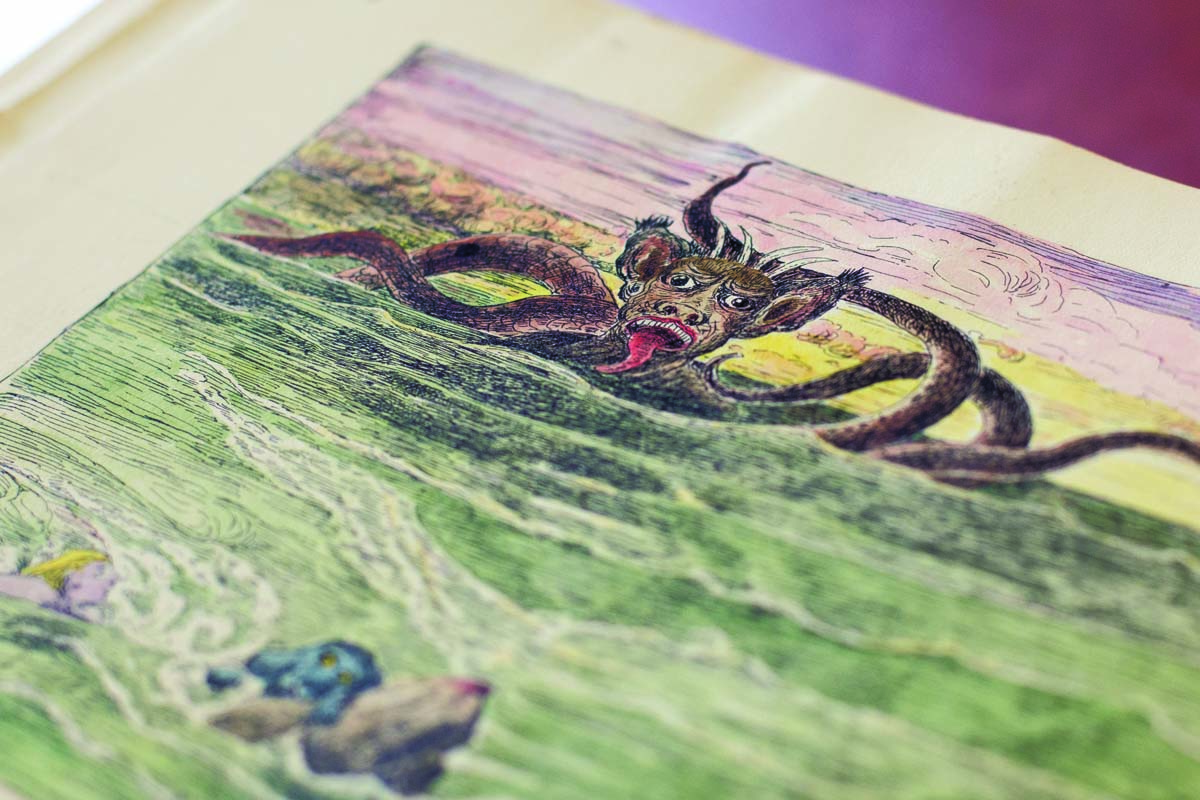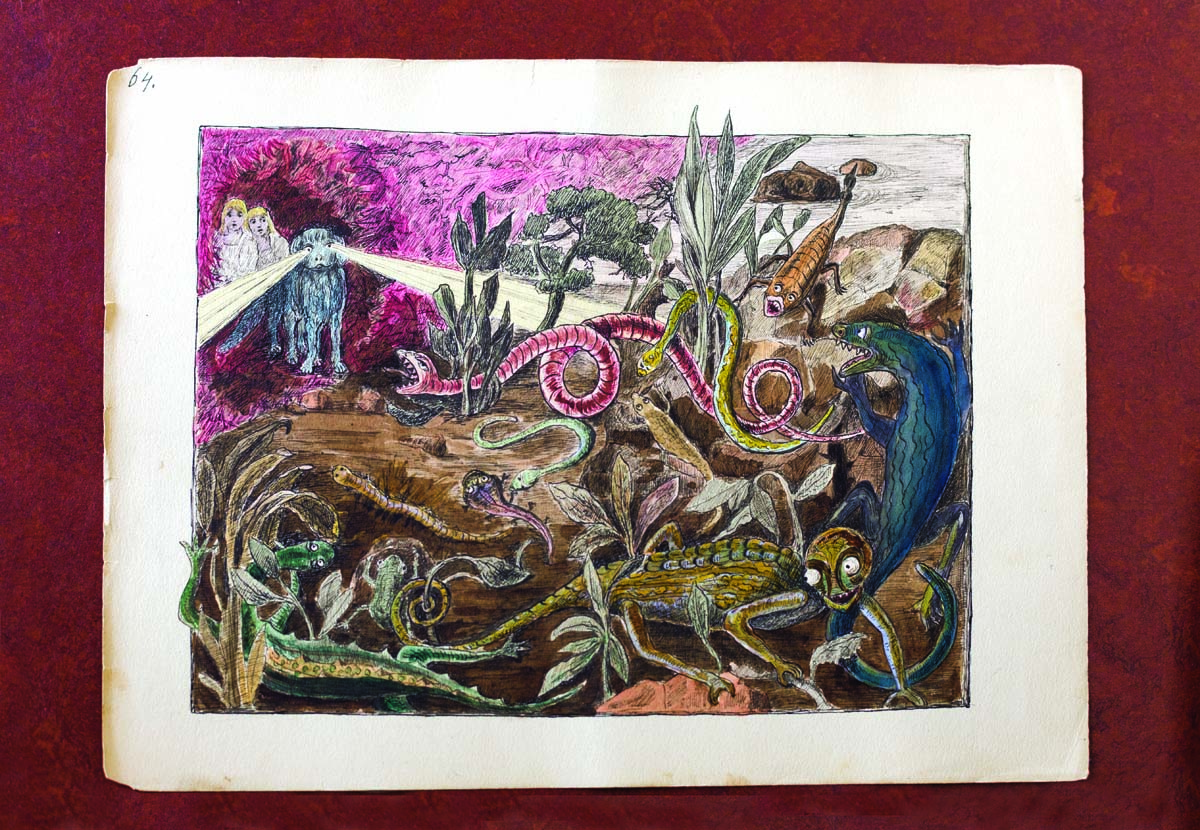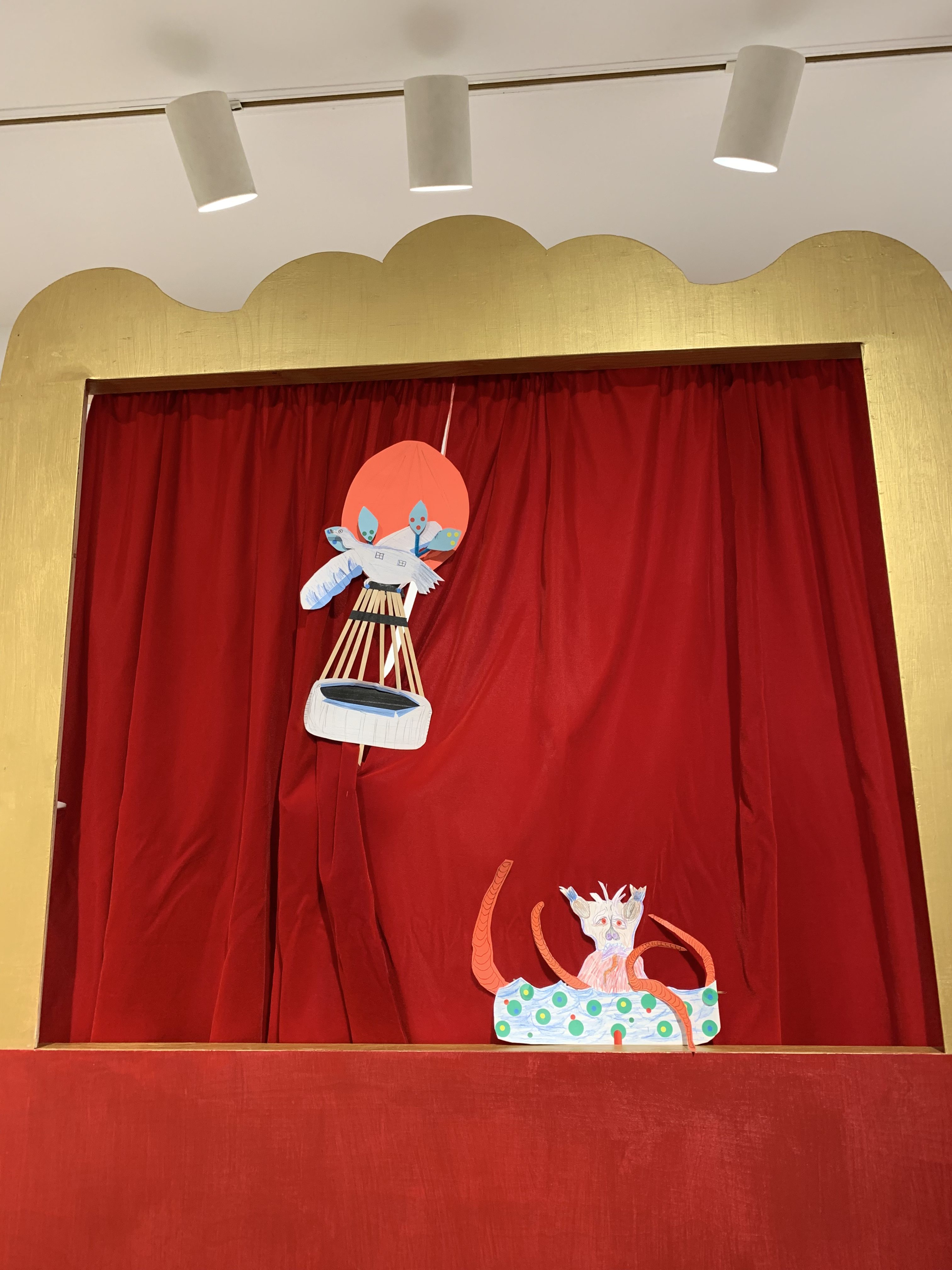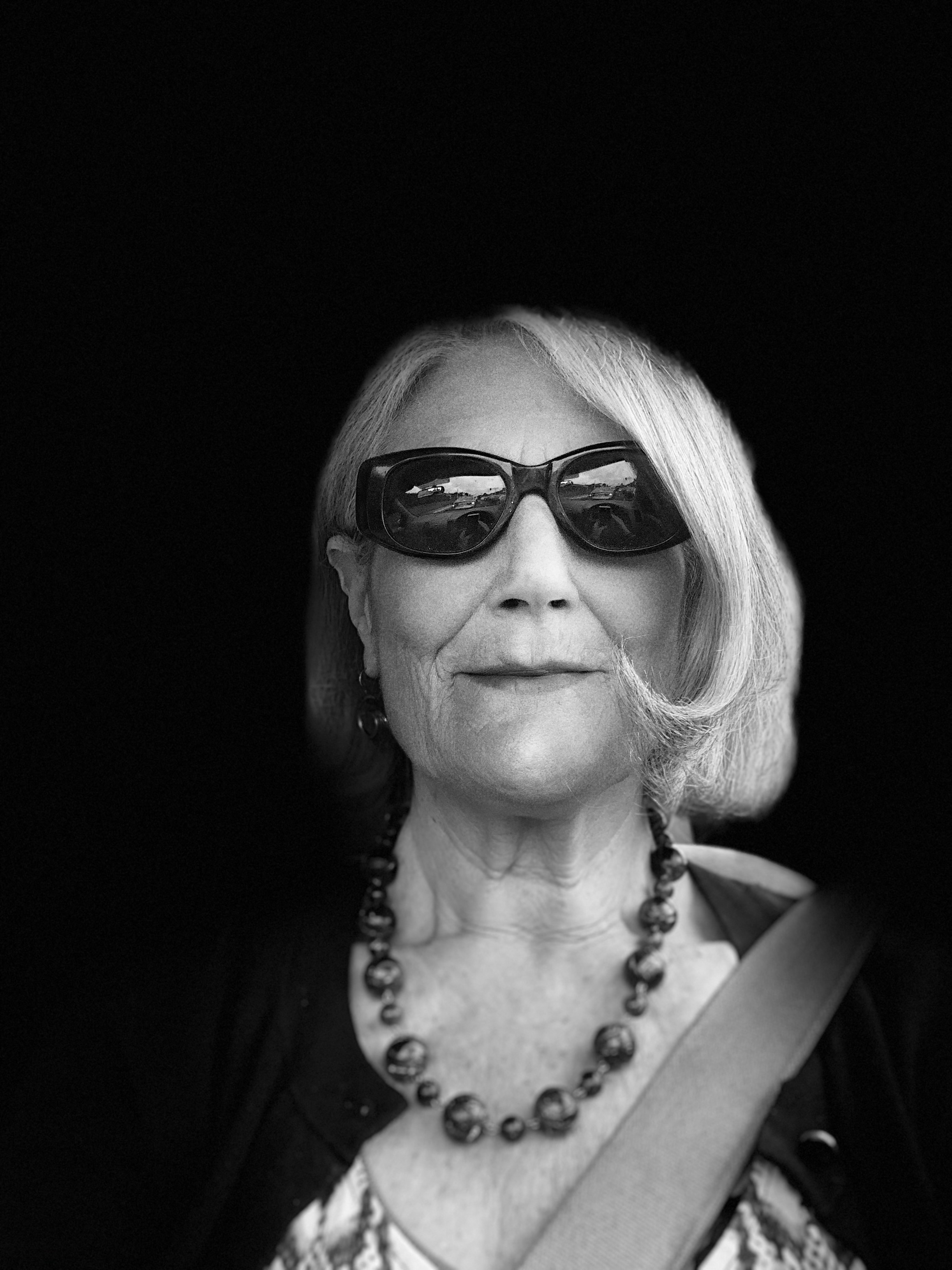
While wildflowers line our freeways, the hills are emerald green and turning yellow with mustard, the desert’s exploding with poppies, and billions of painted ladies are flying north, the world’s children walk out of schools in coordinated protests over threats to their future. As I sat outside in the sun after the protests on March 15, with butterflies zooming all around me and nagging thoughts of peepers trampling the superbloom, I was reminded of an image of Mother Nature becoming so fed up with humans that she shakes us off in a cataclysmic shrug.
That latent power, which may be energizing the young to fight for the planet they’ll inherit, and the astonishing beauty of the butterfly migration is manifest in a hand-written and painted book Helena Modjeska (1840-1909) made over the course of several years in the canyon named for the acclaimed actress.
The inventive fairy tale relates the harrowing adventures of two young brothers who live on Mars. Things get dire when their fighting over a giant butterfly that has landed in their honey results in them ripping it in two. Titi and Nunu launch their quest for magic to set things right, accompanied by their six-legged blue dog, Klembolo.
Presented as a gift to her grandson in 1896, the book eventually made its way from Felix Modjeski to the Museum of the City of New York to UC Irvine’s Special Collections and Archives. Last year, the UCLA Library Conservation Center was entrusted with its preservation, but before the 147 remarkable pages are re-bound, they are being displayed at the Laguna Art Museum (LAM) as “Titi, Nunu, and Klembolo: Helena Modjeska’s Fairy Tale Book.”
The original work features parallel columns of English and Polish text, and winding their way up and in between the two languages are intricately rendered centipedes, beetles and spiders; alien flora; an incense pot hanging from a decorated hand that’s suspended from a hook. Monsters on land and sea terrorize the lads, including one formidable creature seen roasting a mummy-wrapped boy on a spit.
As I was engrossed in this gruesome tableau, I ran into a friend who will soon portray the Polish actress/artist/storyteller, and we shared our research on Modjeska’s life.
A much older actor and family “guardian” became her first husband, though the union wasn’t legal. Modjeska developed her acting chops and soaked up how to tour the provinces in his “second-rate” troupe, but she left him after giving birth to a second child. While dominating the stage back in her hometown of Krakow, Modjeska met a nobleman who became known in the U.S. as Count Bozenta. The couple wed, and with her surviving son, they moved to Warsaw, where their home became an intellectual and artistic salon as Modjeska’s acting career soared, primarily in Shakespearean roles.
Things got hot for the superstar when she was openly critical of Imperial Russian rule over much of Poland. Modjeska recounted in a lecture at the Chicago World’s Fair in 1893 that the tsar had banned her from performing in Russian-controlled parts of her own country. “It was not my destiny to die for my country, as was my cherished dream,” Modjeska wrote in Memories and Impressions of Helena Modjeska: An Autobiography. “Instead of becoming a heroine, I had to be satisfied with acting heroines. Exchanging the armor for tinsel, weapon for words.”
Imagining herself a Joan of Arc saving her country from its oppressors may have been key to her art, in addition to what’s been described as her warm, velvety voice.
To save themselves, Modjeska, the count and several friends left their partitioned country to get back to nature in the land of freedom. But the immigrants’ utopian dream on their ranch in Anaheim didn’t pan out because of drought and a general lack of farming skills. So in 1877, Modjeska returned to the stage, premiering in San Francisco to acclaim despite her heavy accent. She became a true actor/manager; not only did she play the lead roles and design and make the costumes, but she also produced, managed and publicized the grueling train tours that saw the company performing eight times a week in rural towns and major cities from the West Coast to the East.

It was in between these triumphant expeditions that Modjeska rested at the Orange County canyon house she named Arden, where she worked on Titi, Nunu, and Klembolo. Now on view at LAM is the desk she sat at as well as the finished book. The folios are tilted up at the perfect angle to enjoy the intricacies of the unfolding tale in ink and watercolor. Cards provide summaries of each portion of Titi, Nunu, and Klembolo contained within the 13 plexiglass cases. A vertical drawing introduces the two-headed giant; a horizontal one shows his feet in extreme closeup on steps the boys are barely able to climb. Modjeska’s placement of the larger drawings never repeats, but rather enhances the suspense or grinds the story to a stop to take in a full-page, climactic scene. “I just love how she was always creating,” my friend commented as we headed to LAM’s newest innovation: the Lab.
There, stations are set up for all ages to create a storybook or puppet inspired by Modjeska’s fairy tale. We took one look at the puppet theater with its lush red curtain, then sat at the Martian Puppet table. Instantly engrossed, my friend was already channeling the actress’ personal mythology into a replica of the aerial boat flown by a mechanical bird. As I kept an eye on Modjeska’s muted tones and detailed ink lines for my sea monster with movable tentacles, I glanced at the intense primary colors and geometric 3-D projects that are becoming an installation in homage to the artists of the Self-Help Graphics exhibit. (I’ll be back at the Lab for the next Paint It Black.)

Not only would a canyon and a candy be named for her, but one of Saddleback’s peaks as well. Said to have had a repertoire of 256 roles, for me, the height of Modjeska’s American theater career is often absent in the biographies on her various fan sites: She was the first to play Nora in the U.S. premiere of Ibsen’s landmark A Doll’s House. The performance ends with a door slam “heard ’round the world.” But Modjeska was eons ahead of Nora; she was both mountain and canyon.
“Titi, Nunu, and Klembolo: Helena Modjeska’s Fairy Tale Book” at Laguna Art Museum, 307 Cliff Dr., Laguna Beach, (949) 494-8971; lagunaartmuseum.org. Open Fri.-Tues., 11 a.m.-5 p.m.; Thurs., 11 a.m.-9 p.m. Through May 27. $5-$7.

Lisa Black proofreads the dead-tree edition of the Weekly, and writes culture stories for her column Paint It Black.


Wow, amazing blog structure! How long have you been blogging for?
you made running a blog glance easy. The entire glance of
your site is magnificent, let alone the content! You can see similar:
dobry sklep and here sklep online
It’s very interesting! If you need help, look here: hitman agency
Please let me know if you’re looking for a article
writer for your weblog. You have some really good articles and I think I would be a good asset.
If you ever want to take some of the load off, I’d really like to write some articles for your blog in exchange for a
link back to mine. Please blast me an email
if interested. Cheers! I saw similar here: e-commerce and also here: dobry sklep
This paragraph will help the internet viewers for creating new webpage or
even a weblog from start to end. I saw similar here: E-commerce